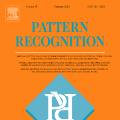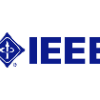人工智能 | SCI期刊专刊/国际会议信息7条
人工智能
CIVEMSA 2019
IEEE International Conference on Computational Intelligence & Virtual Environments for Measurement Systems and Applications
全文截稿: 2019-03-11
开会时间: 2019-06-14
会议难度: ★★
CCF分类: 无
会议地点: Tianjin, China
网址:https://civemsa2019.ieee-ims.org/
The 2019 IEEE International Conference on Computational Intelligence and Virtual Environments for Measurement Systems and Applications (CIVEMSA 2019) is dedicated to all aspects of computational intelligence, virtual environments and human-computer interaction technologies for measurement systems and related applications.
人工智能
SiMLA 2019
Security in Machine Learning and its Applications
全文截稿: 2019-03-30
开会时间: 2019-06-05
会议难度: ★★
CCF分类: 无
会议地点: Bogota, Colombia
网址:http://ssl.ie.cuhk.edu.hk/simla/
Topics
Topics of interest include, but not limited, to followings:
Adversarial Machine Learning
Robustness Analysis of Machine Learning Algoritms
Detection and Defense to Training Data set Poisonous attack
Watermarking of Machine Learning Algorithms and Systems
Attack and defense of face recognition systems
Attacks and defense of voice recognition and voice commanded systems
Attacks and defense of machine learning algorithms in program analysis
Malware identification and analysis
Spam and phshing email detection
Vulnerability analysis
人工智能
Cognitive Systems Research
Special Issue on Biologically Inspired Cognitive Architectures: Inaugural Special Issue on Biologically Inspired Cognitive Architectures [Edited by Alexei V. Samsonovich.]
全文截稿: 2019-04-30
影响因子: 1.425
CCF分类: 无
中科院JCR分区:
• 大类 : 医学 - 4区
• 小类 : 计算机:人工智能 - 4区
• 小类 : 神经科学 - 4区
网址: http://www.journals.elsevier.com/cognitive-systems-research/
We are excited to announce that the merger of Biologically Inspired Cognitive Architectures with Cognitive Systems Research finally comes to life as a regular series of CSR Special Issues on BICA. Until now, the journals have published as separate titles but with one mission - the study of cognitive systems, both natural and artificial. The journal, continuing under the title, Cognitive Systems Research and retaining the Journal’s Impact Factor (1.425) now opens its Special Issue Series on BICA edited by Alexei Samsonovich (USA and Russia). The first Special Issue will be the Inaugural Issue, to which we welcome vision papers, original research articles, and short communications. We are confident that following the merge, we will continue to support, promote and inspire the BICA community. The new integrated part of Cognitive Systems Research, starting with the Inaugural Issue, will focus on emerging areas of interest, including, among many other areas, hot topics such as socially-emotional, creative, and human-like-learning artificial intelligence, that together contribute to the solution of the BICA Challenge: to replicate the essence of the human mind in an artifact. Our commitment to peer-review, rapid publication and wide dissemination remains constant, as does our commitment to the community. We are looking forward to receiving your contributions to the Inaugural Issue, the submission deadline for which is the end of April 2019.
人工智能
Pattern Recognition Letters
Special Issue on Topological Image Analysis and Recognition (TIAR)
全文截稿: 2019-04-30
影响因子: 1.952
CCF分类: C类
中科院JCR分区:
• 大类 : 工程技术 - 3区
• 小类 : 计算机:人工智能 - 3区
网址: http://www.journals.elsevier.com/pattern-recognition-letters/
MOTIVATIONS:
· Topological features and invariants and their computation for digital images.
· Representation and compression of nD images based on topology
· Hierarchical approaches for images based on topology
· Image segmentation under topological constraints
· Parallel processing based on topology in n-dimensional image context
· Parallel topology computation in parallel in n-dimensional image context.
· Topological optimization for digital images
· Topological algorithms for image processing
· Topological transforms for digital images
· Topological recognition of digital images
· Experimental evaluation of heuristics based on topology in image processing
· Topological methods for visualization of nD digital images.
· Applications of computational topology in biomedical imagery.
· Applications of computational topology in image robotics and machine learning.
·Use of topological information in image engineering applications.
人工智能
International Journal of Approximate Reasoning
Call for Papers on Reasoning under Partial Knowledge Special Issue
全文截稿: 2019-06-30
影响因子: 1.766
CCF分类: B类
中科院JCR分区:
• 大类 : 工程技术 - 3区
• 小类 : 计算机:人工智能 - 3区
网址: http://www.journals.elsevier.com/international-journal-of-approximate-reasoning/
Probability and statistics have been the only well-founded theories of uncertainty for a long time, while, during the last fifty years, numerous approaches either extending or proposing as an alternative to probability and statistics have been successfully developed, in such areas like decision theory, economics, artificial intelligence and information theory. These new methods have emerged in order to deal with reasoning and decision making when parameters are prone to imprecisions or vagueness due to incomplete data, human judgment, misclassification problems, and so on.
This special issue focuses on recent advances in methods dealing with reasoning under partial knowledge, enlarging the uncertainty modelling traditions towards a flexible and more specific handling of incomplete or subjective information.
The special issue is a follow-up of the conference Reasoning under partial knowledge held in Perugia on 14-15 December 2018, in honor of Giulianella Coletti’s 70th birthday. This special issue is not limited to the papers presented at the conference, but it is open to new contributions.
All submitted papers will undergo the standard review process of the journal. Authors must selectVSI:RPKas the article type
when submitting your papers.
人工智能
Pattern Recognition
Call for Paper on Special Issue on Explainable Deep Learning for Efficient and Robust Pattern Recognition
全文截稿: 2019-07-15
影响因子: 3.962
CCF分类: B类
中科院JCR分区:
• 大类 : 工程技术 - 2区
• 小类 : 计算机:人工智能 - 2区
• 小类 : 工程:电子与电气 - 2区
网址: http://www.journals.elsevier.com/pattern-recognition/
Deep neural networks (DNNs) have recently achieved outstanding predictive performance, and become an indispensable tool in a wide range of pattern recognition applications, including image classification, object detection, video understanding, document analysis, etc. While DNN methods give impressively high predictive accuracy, they are often perceived as black-boxes with deep, computationally expensive layers, and have been recently found vulnerable to spoofing with well-designed input samples in many safety critical applications. This is especially so in several sensitive or real-time pattern recognition applications including medical diagnosis, face recognition and self-driving cars. In these applications, a single incorrect prediction might be very costly, and thus the reliance on the trained model and its capacity to deliver both efficient and robust data processing must be guaranteed. Therefore, understanding how the DNN behaves, and thus generating explainable deep learning models have become an essential and fundamental problem.
Even with the recent extraordinary rapid progress and significant successes of DNNs over a wide spectrum of applications, it is unfortunately not clear what information must be present in the input data and how it must be used in deep learning models to guarantee fast, safe and stable prediction. There has been an explosion of interest recently along related research directions, such as a) analysing the information bottleneck for efficient learning, b) inferring and regularizing the network structure for stable and robust prediction, and c) interpreting the learned representations and generated decisions. This encouraging progress brings profound implications for research into the topic of this special edition, namelyexplainable deep learning for efficient and robust pattern recognition. This important and open research topic brings new challenges and opportunities to the pattern recognition community. It requires the application of tremendous efforts to uncover the fundamental mechanisms from several different point of views, including information theory, machine learning, computer vision, information security, etc. Moreover, it also potentially benefits a variety of closely related areas in pattern recognition areas, and opens up the possibility of practical safety-critical or low-cost applications.
The goal of this special issue is to broadly engage the different communities together and provide a forum for the researchers and practitioners related to this rapidly developed field to share their novel and original research of the topicexplainable deep learning for efficient and robust pattern recognition. Survey papers addressing relevant topics are also welcome.
The page limit for regular papers is 35 single column double spaced pages, and 40 pages for reviews. Authors should clearly state the relationship between the submitted paper, and any related previously published conference or journal papers. Submissions to the special edition must contain a substantial amount of original previously unpublished material. Topics of interest include, but are not limited to:
•Novel theoretical insights on the deep neural networks
•Quantifying or visualizing the interpretability of deep neural networks
•Stability improvements of deep neural network optimization
•Deep network compression/acceleration in pattern recognition applications
•Compact architecture and the regularization of deep neural networks
•Adversarial attacks and defending critical applications in pattern recognition
•Deep neural network in safety-critical or low-cost pattern recognition
人工智能
Pattern Recognition
Call for paper of a special issue on Modeling and Learning for Matching: Models, Methods and Applications
全文截稿: 2020-12-30
影响因子: 3.962
CCF分类: B类
中科院JCR分区:
• 大类 : 工程技术 - 2区
• 小类 : 计算机:人工智能 - 2区
• 小类 : 工程:电子与电气 - 2区
网址: http://www.journals.elsevier.com/pattern-recognition/
The special issue will focus on the recent advance in modeling and learning to solve the matching problem in pattern recognition. The capability of finding correspondence among images, graphics, point sets and other structures has been a fundamental in many pattern recognition. The past decades have witnessed the rapid expansion of the frontier for automatic correspondence establishment among images/graphics, which is largely due to the advances in computational capacity, data availability and new algorithmic paradigms. Although the correspondence problem has been extensively studied in the context of multi-view geometry, its more generalized forms, along with underlying connections among different methods and settings, have not been fully explored. Meanwhile, the combination of big data and the deep learning paradigm has achieved significant success in many perceptual tasks; however, the existing paradigm is still far from a panacea to the matching problem, which often calls for more careful treatments on the local and global structures. Also, there are emerging methods for discovering latent graph structures that enrich the applicability for graph matching. In this special issue, we attempt to assemble recent advances in the matching problem, considering the explosions of big visual data applications and the deep learning algorithms.
This special issue will feature original research papers related to the models and algorithms for robust establishment of correspondence, together with applications to real-world problems.
Main Topics of Interest (but are not limited to):
Object matching: 1) Graph representation and modeling using image/graphics data; 2) Robust matching/registration for visual correspondences over two or multiple images/graphics/point sets; 3) Partial, one-to-many/many-to-many matching, in the presence of major noise and outliers; 4) Similarity between graphs/graphics and graph clustering/classification; 5) Cross-network matching, e.g. social networks and other forms e.g. protein network; 6) Incremental matching of a series of objects; 7) Shape matching.
Tracking and optical flow estimation: 1) Single/multiple object tracking and data association; 2) Robust and/or efficient optical flow methods; 3) Object co-detection; 4) Visual trajectory generation and modeling; 5) Person Re-ID; 6) Planar Object Tracking
Correspondence for 3-D vision: 1) Calibration, and pose estimation; 2) visual SLAM; 3) Depth estimation and 3-D reconstruction;
Learning for/by permutation and matching: 1) Learning graph structure and similarity from data with established or unestablished correspondences; 2) Learning image feature representation from established or loosely established correspondence; 3) Common/similar objects discovery and recognition from images; 4) Learning for matching and permutation.
Structure discovery from data: 1) structure inference from behavior data e.g. time series and event sequence; 2) latent structure matching based on behavior data
Applications: Application of matching technology to solve any real-world visual understanding problems including object detection/recognition among images/graphics, image stitching, 2-D/3-D recovery, robot vision, photogrammetry and remote sensing, industrial imaging, embed system etc.
下载Call4Papers App,获取更多详细内容!


登录查看更多
相关内容
计算智能(Computational Intelligence)这本领先的国际期刊促进和刺激了人工智能(AI)领域的研究。计算智能涵盖了从人工智能的工具和语言到其哲学含义的广泛问题,为实验和理论研究、调查和影响研究的出版提供了一个活跃的论坛。该杂志是为了满足学术和工业研究中广泛的人工智能工作者的需求而设计的。
官网地址:http://dblp.uni-trier.de/db/journals/ci/
Arxiv
78+阅读 · 2019年11月10日




